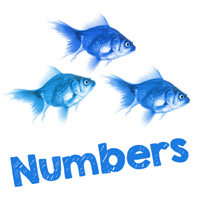
Signs That Are Close... But Not the Same — Money
This article is part of our “Signs That Are Close... But Not the Same” series, which highlights signs that look similar, but have different meanings.
The ASL signs shown below look similar, but are not the same. There are many ASL signs that when produced look similar, but in fact have a completely different meaning. Below you will find examples of such signs. Watch closely to see if you can see the differences. In addition, watch my eyebrows, look to see when I tilt my head or lean my body in a certain way, even what my mouth is doing. These nuances are called inflections and trust me, inflections matter.
These examples are all signs related to money.
1. Money vs. Buy
Both MONEY and BUY start with the dominant hand in the flat O handshape on top of the non-dominant hand in the open B handshape. MONEY taps on the non-dominant palm two times, while BUY makes a small arcing movement forward.
- MONEY: Think of having a folded wad of bills in your hand.
- BUY: Think of taking the money in your hand and giving it to someone when you BUY something.
 |
2. Cent vs. Think
CENT and THINK both use the dominant hand in the 1 handshape near your temple or side of your head. CENT has the dominant hand starting at the head and then pulling away. THINK has the opposite movement, with the dominant hand move upward and towards the head, landing on the side of your forehead.
- CENT: Start at the head as you think of the head on a penny.
- THINK: Point towards your head, where the thinking occurs.
 |
3. Sell vs. Sold
When signing SELL and SOLD, both hands in flat O handshapes move in an outward motion. SELL has two movements, while SOLD has one movement.
- SELL: The repeated movement of SELL indicates the action of SELLING is still taking place.
- SOLD: The sign for SOLD is a very old sign, first recorded in the U.S. in the late nineteenth century.1 The sign originally symbolized holding up an item, like a piece of cloth, to show it off to the buyer. It is also said to symbolize the old custom of merchants shaking handkerchiefs to attract customers. The single, firm movement when signing SOLD signifies the completion of the sale.
 |
How can I figure out the difference between signs on my own?
If you see two signs that look close, but not the same, and you’re not sure, you may use Signing Savvy features to help you figure out the difference. All of our signs have sign descriptions and memory aids that members may access. Reading the sign description and memory aids for the signs will help you figure out the small differences between them that your eyes don’t catch at first. We also recommend using the pause and slow motion feature to slow down the video, so you may take a closer look. These features are available to Signing Savvy members.
Resources
ADVERTISEMENTS
 Brenda Cartwright is a Coda, seasoned interpreter, a master teacher, well known presenter, and author of several best selling sign language and interpreting textbooks from the RID Press. For 35 years Brenda was the Chair of the Sign Language Interpreter Program at Lansing Community College in Lansing, Michigan.
Brenda Cartwright is a Coda, seasoned interpreter, a master teacher, well known presenter, and author of several best selling sign language and interpreting textbooks from the RID Press. For 35 years Brenda was the Chair of the Sign Language Interpreter Program at Lansing Community College in Lansing, Michigan. Signing Money
Signing Money Signing Math Equations
Signing Math Equations Signs That Are Close... But Not the Same — Numbers
Signs That Are Close... But Not the Same — Numbers






